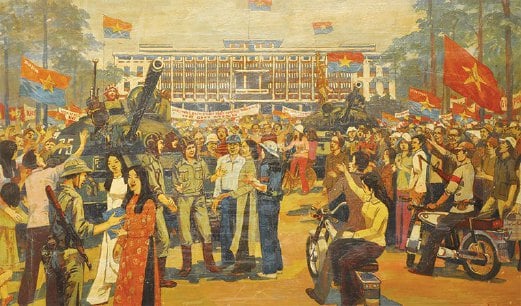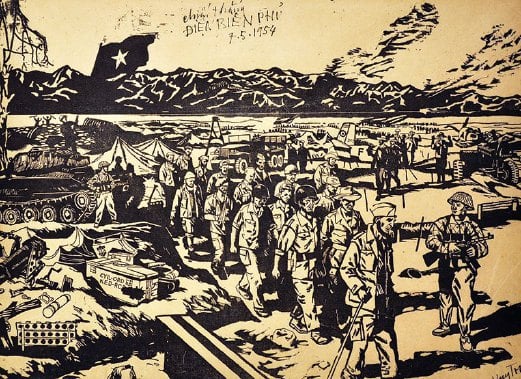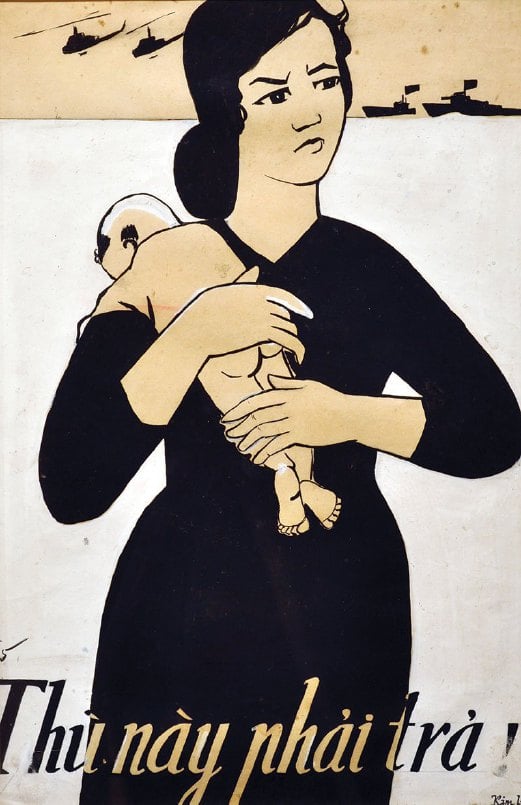The National University of Singapore Museum’s seminal Vietnam War Collection 1954-1975 is a thought-provoking showcase, writes Sarah NH Vogeler
THERE are 1,200 works in total, accumulated over the course of almost two decades. And each given time, around 40 are displayed at the National University Singapore (NUS) Museum, all on loan to the museum for three years by HE Ambassador Datuk N. Parameswaran.
Viewing the ones mounted, emotions become conflicted: From curious to horrified to depressed and, moved to tears - and possibly everything else in between. Many of us who grew up and live in worlds where wars are things we only read about in the media and books are aghast at the bloodshed, cruelty, senselessness and stupidity.
But can we really truly understand?
“The posters and drawings in this collection give valuable insight into the Vietnamese wartime experience mainly from the Northern perspective, underwent by combatants on the frontline, or by ordinary civilians called to arms,” begins curator Chang Yueh Siang, before continuing: “Datuk Param recounts that he was based in the North and met artists who lived there. The exhibition focuses largely on drawings in the collection —these capture the urgency of battle, giving a glimpse of life in the frontlines. Who were the war artists, and where did they come from?”
Several of the wartime artists in the collection, explains Chang, had been students at the Hanoi College of Fine Arts, which had previously been the Ecole des Beaux-Arts de I’Indochine during the colonial period between 1925 and 1945.
He elaborates: “In fact, Tran Van Can, the author of a woodcut poster celebrating Vietnam-Indonesia ties, 1990-1994, had himself been a student, after the school came under the administration of the Northern Democratic Republic of Vietnam.”
This collection, easily one of the largest anywhere in the world by a single collector, comes in various mediums, from posters to watercolours to printed propaganda, paintings, drawings and sketches. These were not meant to be beautiful pictures. But they’re beautiful just the same, where artists illustrated the strength that hope brings amidst such desperateness.
Param began his now-vast art trove in the mid-80s, and upon his arrival in Vietnam five years later, his interest in Vietnamese war drawings grew naturally. He travelled between Ho Chi Minh City and Danang frequently, and acquainted himself with a number of artists. After his posting in Hanoi concluded, he continued collecting and together with collections manager Charmian Chelvam, painstakingly categorised every last piece.
IMAGES THAT LINGER
“Most of the works in this collection came from much searching, and none were purchased from a gallery,” shares Param. “I came across a show in Trang Tien Street and saw Huynh Van Thuan’s works. He depicted in pencil sketches and later, posters, the atrocities done to churches and Buddhist temples, so credibly. His watercolours, street and market scenes were captivating. Huynh’s works made up the early part of my Vietnamese collection. In those times, people wanted to forget more than anything, so there was almost no interest in these prints and illustrations.”
Continuing, he recalls: “My paths crossed with many whilst there; Huy Toan, Hoang Dinh Tai, Pham Luc. In Saigon I met Thanh Chau, whose watercolours left an indelible mark. They are many things that we as outsiders don’t realise about what they went through. But once you know, you say, hey, they too, suffered.”
There are many ways to view and absorb the Vietnam War Collection. They all, in one way or another, effaces. You get wiped out. The women, the unknown and “invisible” soldiers, are images you take with you for a long time. They are put in precarious situations, they carry guns, load weapons and cannons; they fight.
And even in the midst of impending death and carnage, the artists drew magnificent landscapes, of sunshine and flowers and although fleeting, that promise of freedom which made struggling for one more day almost bearable. Almost.
There are countless accounts of the Vietnam War, and to read everything is impossible. But one which stands out is from author Bao Ninh’s first novel The Sorrow Of War, A Novel Of North Vietnam, written in 1990.
Born in Hanoi in 1952, he served with the Glorious 27th Youth Brigade. Of the 500 in his regime, Bao Ninh was one of 10 who survived. It’s a war still hideously fresh, its injuries both singular and combined, nowhere near healing. He wrote:
“He understood then why his mother had left his father and come to live with this wise, kind-hearted man. For the entire afternoon he sat with his stepfather in the room in which his mother had lived her last years, and where she had died. And that winter afternoon became his only memory of his mother, a memory of warmth and a special atmosphere conjured up by his stepfather as he read old love poems he had composed for her when he was young.
He took a guitar down from the wall and started singing in a deep voice a song by Van Cao, a song his mother had loved. It was a slow, melancholic song recalling loved ones who were forever gone, decrying life’s unhappiness yet with a strain of underlying hope, ‘Don’t lament, don’t bathe in the sorrows, look up and live on.’
The sorrow of war inside a soldier’s heart was in a strange way similar to the sorrow of love. It was a kind of nostalgia, like the immense sadness of a world at dusk. It was a sadness, a missing pain which could send one soaring back into the past. The sorrow of the battlefield could not normally be pinpointed to one particular event, or even one person. If you focused on any one event it would soon become a tearing pain...”
In retrospect, The Vietnam War Collection is one I’d love to see here in Malaysia. And why no one has gone “hell for leather” to secure a showing is completely bewildering. Just wondering.
VIETNAM WAR COLLECTION 1954-1975
NUS Museum will be rotating the collection at the end of April. For those interested in Vietnamese works, Interpr8 Art Space will be holding a show simultaneously (of the non-war variety), showcasing contemporary pieces over two decades old.
Venue National University of Singapore, 21 Lower Kent Ridge Road, Singapore
EMAIL [email protected]
Time 8.30am-6pm (Mon-Thu); 8.30am-5.30pm (Fri)
(Closed on Sat, Sun and public holidays)
venue Interpr8 Art Space
Block C5, Level G4, Lot 20, PUBLIKA,
Jalan Solaris Dutamas 1, KL
WEBSITE www.interpr8artspace.com









